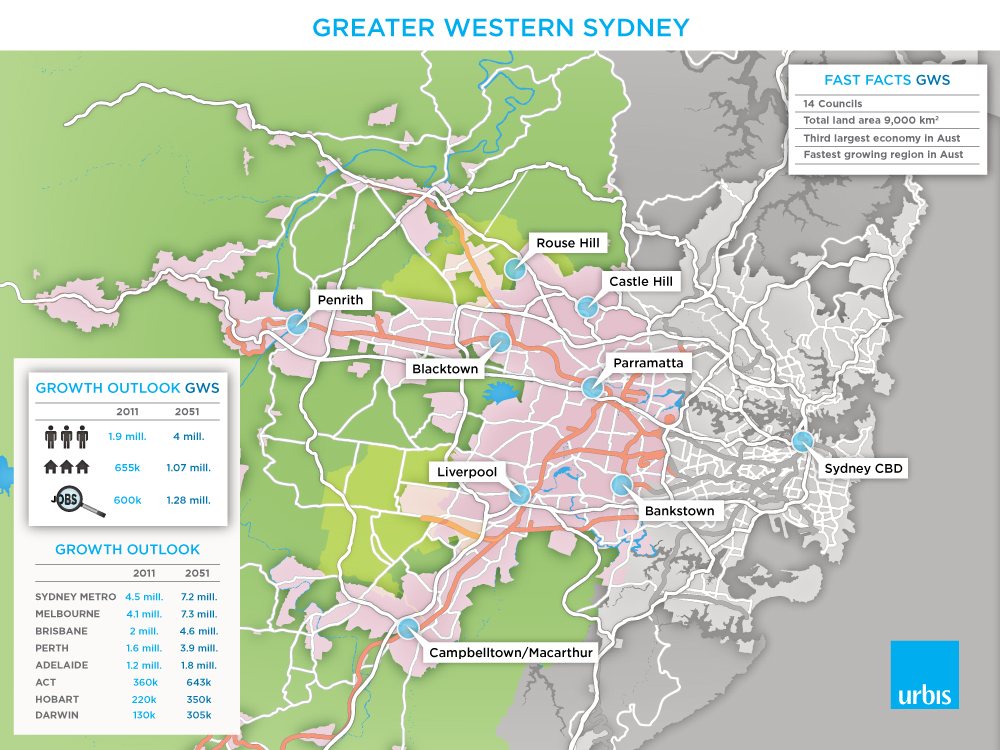Managing Director of Urbis, John Wynne recently moderated a Property Council panel discussion focussed on how to ‘unlock’ the potential of Greater Western Sydney (GWS) in the decades ahead.
Wynne set the scene for the panel discussion by outlining how GWS represents one of the most important urban areas in Australia, underscored by the fact that the region:
- has the third largest economy in Australia (after Sydney & Melbourne) and holds 600,000 jobs.
- is the amongst the fastest growing regions in the nation and is home to one in ten of all Australians.
- is the location of 150 of the nation’s top 500 companies.
- contains some of the largest commercial centres in the country – Parramatta, Penrith, Liverpool, Blacktown and Norwest.
- has a current population of almost 2 million (being around 45% of Sydney’s total population) with a projection to double to 4 million by 2050.
- covers an enormous land-area of approximately 9000 sq km – equivalent to 13 Singapore’s

